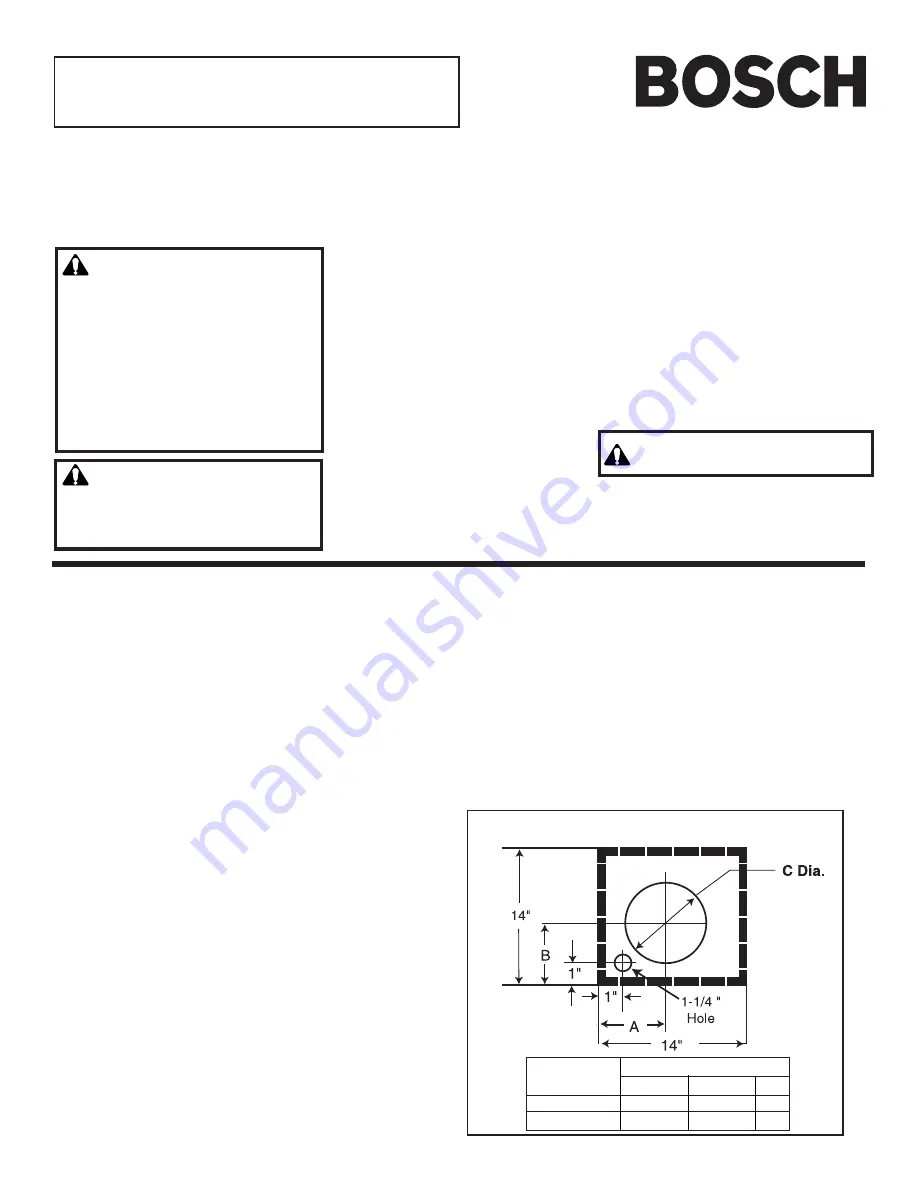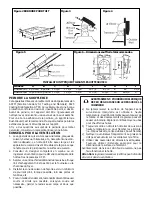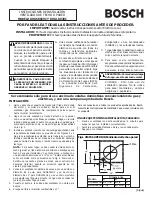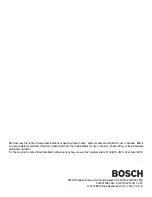
WARNING - TO REDUCE THE
RISK OF FIRE, ELECTRIC SHOCK,
OR INJURY TO PERSONS, OB-
SERVE THE FOLLOWING:
A. Installation work and electrical wir-
ing must be done by qualified
person(s) in accordance with all ap-
plicable codes & standards, including
fire-rated construction.
B. Sufficient air is needed for proper
combustion and exhausting of gases
through the flue (chimney) of fuel
burning equipment to prevent back
drafting. Follow the heating equip-
ment manufacturers guideline and
safety standards such as those pub-
lished by the National Fire Protection
Association (NFPA), and the Ameri-
can Society for Heating, Refrigera-
tion and Air Conditioning Engineers
(ASHRAE), and the local code au-
thorities.
C. When cutting or drilling into wall or
ceiling, do not damage electrical wir-
ing and other hidden utilities.
D. To properly exhaust air, be sure to
duct air out side. Do not vent exhaust
air into spaces within walls, ceilings,
attics, crawl spaces, or garages.
WARNING:
To reduce the risk of
fire, use only metal ductwork.
CAUTION - For General Ventilating
Use Only. Do Not Use To Exhaust
Hazardous Or Explosive Materials And
Vapors.
INSTALLATION:
1. Remove and discard shipping bracket (attached to motor
mounts and inlet collar). Check to see if blower wheel turns
freely. Do not replace top until installation is complete.
2. Provide a square cutout through the roof (or wall) as shown
by the dashed lines, or cut a round hole to fit duct with a
separate hole for electrical conduit as shown by solid lines
in Fig. 1.
3. Install the remote ventilator with the discharge pointing
down slope as shown in Figures 3 and 4. Follow standard
roofing procedures. Install the ventilator so the discharge
edge is on top of the shingles and the rear edge is
underneath the shingles.
PLEASE READ ENTIRE INSTRUCTIONS BEFORE PROCEEDING.
IMPORTANT:
Save these instructions for the Local Electrical Inspector’s use.
INSTALLER:
Please leave these Installation Instructions with this unit for the owner.
OWNER:
Please retain these instructions for future reference.
Recommended for use only over conventional domestic gas and electric ranges, and
use with an approved Bosch Hood.
SAFETY WARNING:
Before servic-
ing or cleaning unit, switch power off
at the service panel and lock service
disconnecting means to prevent
power from being switched on acci-
dentally. When the service discon-
necting means cannot be locked, at-
tach a tag to the service panel to
indicate power has been switched off
for maintenance.
NOTE:
The unit must be sealed between the roof (or wall)
and the underside of the flange with roofing mastic to
prevent leaks. For installation on a flat roof, or roofs with
a pitch less than 1-1/2" in 12", install ventilator on the curb
as shown in Fig. 2. Position the curb on flat roofs so that
the discharge (low) end points away from prevailing wind.
4. Connect ventilator to the exhaust system with 8 inch diam.
duct for DHG6003UC and 10" diam. duct for DHG1003UC
and use adjustable elbow to adjust to roof angle. Tape all
joints to prevent air leaks.
5. Connect ducting in the inlet to the ventilator with duct tape.
6. Clearance to combustible material is 0".
For wiring to all approved Bosch products, see Installation
Instructions provided with that product.
INSTALLATION INSTRUCTIONS
ROOF OR WALL VENTILATOR
MODEL DHG6003UC & DHG1003UC
Dimension
Model
A
B
C
DHG6003UC 5-11/16"
6-1/8"
9"
DHG1003UC 7-1/4"
6-15/16" 11"
Fig. 1 TOP VIEW Down Slope of Roof or Wall
(Over)
ONCE INSTALLATION AND WIRING ARE COMPLETE:
1. Turn ventilator on High for 5 minutes to ensure proper
installation.
2. Step to Medium & Low ensuring each speed setting.
3. Turn ventilator off.
Summary of Contents for DHG1003UC
Page 7: ......


























